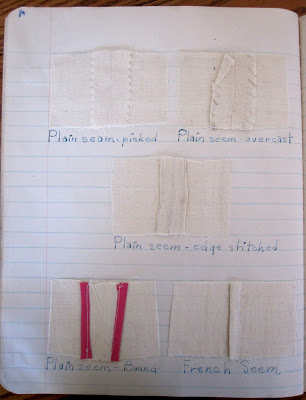John F. Zdrojewski made home movies, many of which have come down to us and been transferred to DVD format. His great-grandson Tye Zdrojewski has put some up on YouTube for us, the first two such being listed on the right sidebar in the "Links" section.
This third segment is all Masses and processions. I cued my questions originally to the time marker on the DVD; now I'll enter a few additional time markers from the standalone YouTube video.
(27:30) Mass in a stadium in Buffalo: Why does the celebrant change his vestments, as at YouTube 2:55? Is Mass concluded and is he putting his outerwear (red) back on?
YouTube 4:09 shows a row of honor guards wearing wonderful hats with white plumes. They have swords. Who are they?
After everything went to hell in the sixties After "Vatican II," my Dad bought a big beautiful Tridentine Missal, such as the priest used to use while celebrating Mass. It was as if Dad had rescued and brought home a beautiful sheep that the shepherds had tossed into a roadside ditch. I have it upstairs.
This third segment is all Masses and processions. I cued my questions originally to the time marker on the DVD; now I'll enter a few additional time markers from the standalone YouTube video.
JFZ's typewritten label on the inside of the film can says this:
"-Documentary-
Eucharistic Congress-War Memorial
Auditorium-Procession of Bishops
Clergy and various church groups and societies.
Jubilee Mass of Rev. F. Wlodarczak."
(27:30) Mass in a stadium in Buffalo: Why does the celebrant change his vestments, as at YouTube 2:55? Is Mass concluded and is he putting his outerwear (red) back on?
YouTube 4:09 shows a row of honor guards wearing wonderful hats with white plumes. They have swords. Who are they?
(Approximately 31:53) Is that JFZ being an altar boy?? Or do we just have more relatives than I thought we had?
(32:11) Who are those dignitaries in top hats getting off the bus? Are they Knights of Columbus?
(32:16) The ladies in white, with blue capes: who are they? Can anyone read the yellow stop-sign the leader carries? Mary's blue mantle, I get that. (At Annunciation Parish in the 1960s, the nuns tried to get the mothers to agree to dress all the girls in my FHC class all alike, and that way. Guess, just guess, who scotched that plan?)
(33:15) At YouTube 5:34 it looks like a stadium at night with the people holding flashlights. So - the Congress kept on congressing past nightfall?
So who was Father Wlodarczak, mentioned on the typewritten card at YouTube 5:52?
At YouTube 6:00 you can see the physical setup for Mass, such as was used for about 1,960 years. The congregation and the priest face the same way, and the focal point is the Tabernacle. I remember the day in the mid-sixties, while Vatican II was doing its thing, when we walked into church one Sunday morning to find the altar turned around. The priest was behind the altar, facing the congregation. So he had his back to the Tabernacle, or maybe the Tabernacle was shoved off to the sidelines.
Pretty soon they were pulling out the kumbaya guitars and the bongo drums, and our beautiful Liturgy was to be heard no more.
All these offenses and absurdities were a powerful accelerant to the emptying out of the churches in that and subsequent decades.
(35:40) Okay! Father Fimowicz gives the sermon! But which one is he? My Dad mentioned him all the time; he was his parish priest at St. Luke's when Dad was young. And he must have been Father Tomiak's superior. The only story I remember about Father Fimowicz, though, is about him regularly, all winter, taking off his shoes and socks at the Rectory door, and trotting around the block in the snow, lifting up his cassock so that it would not get wet. He explained to my Dad that this was good for the circulation.
Who is the smiling happy man doffing his hat to the camera at the door of the rectory? Wlodarczak? or Fimowicz?
That is too quick of a pan of St. Luke's, at the end there. Considering how the physical church of his childhood, as well as the Liturgy of his life, were abandoned, can there be any question why my Dad felt such desolate loss in the last decades of his life?
Julie



















































